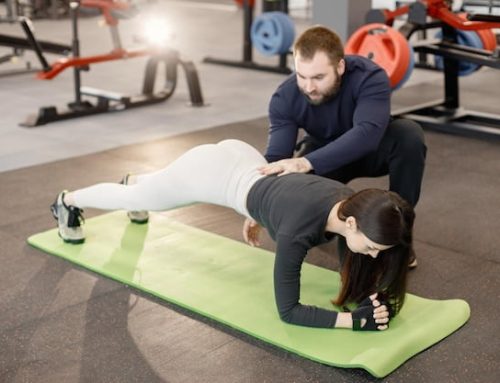Is there a better and worse training system?
In practice, much depends on:
- the technique of performing the individual exercises,
- diet,
- regeneration,
- supplementation.
- Training systems are worth changing from time to time, as are individual training plans. In this way, the body does not become accustomed to once learned stimuli and can continue to develop.
It is assumed that all body workout (ABW) systems are the best choice for beginners, as they stimulate the muscles of the entire body. However, they do so to a moderate degree without leading to overload of joints, tendons and muscles. Very often, beginner bodybuilders also do not have a sufficiently well-developed ‘muscle feel’ to benefit from more extensive training plans.
Split training, on the other hand, may work better for experienced people who want to make up for deficiencies in their physique or know their own body well enough to know where the limit of overtraining lies and are able to withstand a high training load.
The Six Types of Sports-Specific Training
Sports-specific training involves activities and exercises that are designed to enhance the performance of athletes in a particular sport. The aim of such training is to improve the athlete’s strength, endurance, stability, speed, and agility, as well as their mental toughness, focus, and strategic thinking. There are six main types of sports-specific training that all athletes should incorporate into their training regimen.
1. Cardiovascular/Aerobic Training
Cardiovascular or aerobic training is an essential aspect of any sports-specific training program. This type of training is designed to improve the athlete’s heart and lung function, as well as their endurance. The objective of cardiovascular training is to increase the amount of oxygen that the body can consume and transport to the muscles during physical activity. Examples of cardiovascular training include running, swimming, and cycling.
2. Strength Training
Strength training involves exercises that focus on building muscular strength and endurance. This type of training is important for all athletes, as it increases power output, enhances speed and agility, and improves bone density. Strength training can be performed using free weights, resistance machines, or bodyweight exercises. Examples of strength training exercises include deadlifts, squats, pushups, and pull-ups.
3. Plyometric Training
Plyometric training involves explosive, high-impact exercises that are designed to improve power and speed. This type of training involves jumping, bounding, and hopping exercises that engage the muscles in a rapid and dynamic manner. Plyometric training is particularly beneficial for athletes who rely on quick bursts of speed and power, such as sprinters, basketball players, and boxers.
4. Agility Training
Agility training involves exercises that focus on improving the athlete’s ability to change direction quickly and efficiently. This type of training is particularly important for athletes who need to be able to change direction rapidly, such as soccer players, tennis players, and football players. Agility training exercises include ladder drills, cone drills, and shuttle runs.
5. Flexibility Training
Flexibility training involves activities that are designed to improve the range of motion of the athlete’s joints and muscles. This type of training is important for all athletes, as it reduces the risk of injury and improves overall athletic performance. Examples of flexibility training exercises include stretching, yoga, and Pilates.
6. Interval Training
Interval training involves alternating periods of high-intensity exercise with periods of low-intensity exercise or rest. This type of training is particularly effective for improving cardiovascular fitness, as it increases the body’s ability to tolerate and recover from high levels of physical exertion. Examples of interval training include sprint intervals, bike intervals, and circuit training.
In conclusion, sports-specific training is essential for athletes who want to improve their performance and achieve their goals. By incorporating the six types of training described above into their training program, athletes can enhance their strength, endurance, speed, agility, and flexibility, as well as their mental toughness, focus, and strategic thinking. Remember that every athlete is unique, and their training program should be tailored to their individual needs and goals. So, whether you are a professional athlete or a weekend warrior, make sure to incorporate these six types of training into your training regimen to take your performance to the next level.






